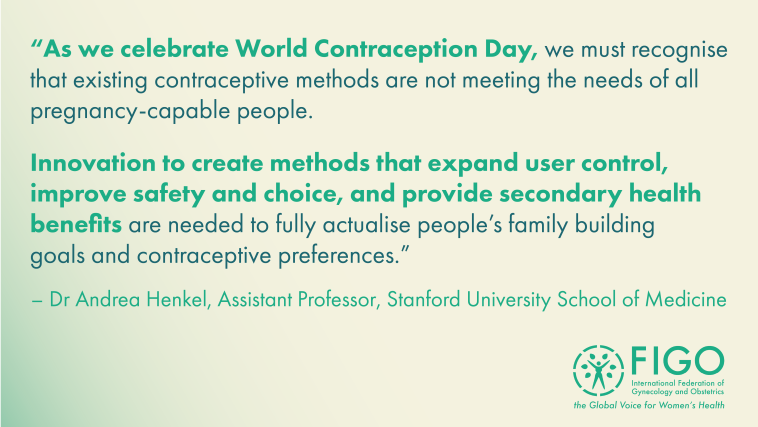Access and innovation are key to meeting current and future global contraceptive needs

On this World Contraception Day 2022, Professor Nichole Tyson and Assistant Professor Andrea Henkel from the Stanford University School of Medicine highlight the role played by contraception in improving health and economic outcomes for people of reproductive age worldwide. They also stress the need for family planning policies that put individual choice and empowerment at the centre and the need for innovation to meet global contraceptive needs.
Contraception as a metric for health and economic mobility
The increased availability and use of modern contraception in recent decades has improved maternal and infant health-related outcomes such as reduced unintended pregnancies, prevented high-risk pregnancies, and optimised birth spacing. As of 2019, nearly half of pregnancy-capable, reproductive-age people were using some form of contraception: over 90% of contraceptive users were using modern – more effective – forms of contraception.
The ability of individuals and couples to decide freely and thoughtfully on the number, spacing, and timing of births has led to extraordinary economic mobility. As a result of contraception and delayed first birth, more people can complete education, setting a direct path towards inclusive economic growth and gender equality in the workplace.
However, an estimated 163 million pregnancy-capable people living in low-resource settings would like to delay or avoid pregnancy but still have no access to contraception. Family planning programmes receive less than 1% of international development aid, leaving many without access. Addressing this unmet contraceptive need would reduce 30% of maternal deaths and most unsafe abortions, contributing to 13% of maternal mortality.
Family planning and the environment
Increased access to family planning resources is essential to climate change policy. Demographic changes, such as rapid population growth, impacts the environment via rapid breakdown and higher demand of natural resources. An additional and equally important consideration is the increased vulnerabilities of lower resource populations to natural disasters. Less developed countries are at high risk of depletion of their present resources as food insecurity is a constant and widespread concern.
Compounded by natural disasters and disease, a vicious cycle of food insecurity and depletion devastates low resource populations. Family planning is a key element to a multi-pronged approach to decrease the strain on resources and minimize exposure to climate-related risks, especially in low resource settings.
Ongoing coercive reproductive practices
As we celebrate the incredible health and economic gains brought about by access to contraception, we cannot ignore the historical context of coercive practices related to contraception – especially those targeting disadvantaged groups.
Population growth targets have previously lead to punitive policies to disincentivise large families. On the opposite end of the spectrum, attempts to increase population growth have lead to restricted contraception access. Efforts to limit reproduction of minority people in various countries across the globe have resulted in forced sterilisations and measures providing financial incentives for those receiving public assistance to obtain the contraceptive implant.
There remains a subversive, perhaps unconscious, preferential contraceptive counselling in many setting for long-acting or permanent forms of contraception for those living in poverty, those with marginalised racial, ethnic identities, and adolescents. Further compounding this potential bias is that long-acting contraception is often dependent on a clinician for removal. As a result, many people’s reproductive desires are currently undervalued or disregarded. We, as clinicians providing contraception, must prioritise our patients’ values, preferences, and lived experiences in contraceptive counselling to minimise the effect of bias on care provision.
Limited acceptability of current methods of contraception
Globally, there are approximate 99 million unintended pregnancies every year, representing nearly half of all pregnancies. These unintended pregnancies are not limited to those without contraception access. For many, existing forms of contraception are unacceptable in side-effects, frequency of administration, or are medically contraindicated. Current on-demand methods are less effective but may be more reflective of the desired contraceptive use of many individuals.
As we celebrate World Contraception Day, we must recognise that existing methods are not meeting the needs of all pregnancy-capable people. Innovation to create methods that expand user control, improve safety and choice, and provide secondary health benefits are needed to fully actualise people’s family building goals and contraceptive preferences.